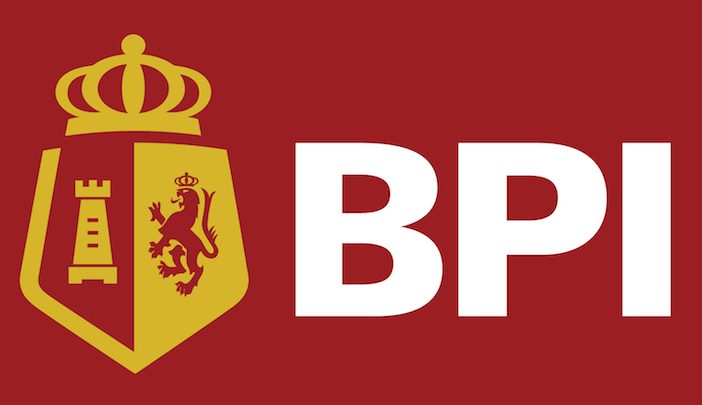SUMMARY
This is AI generated summarization, which may have errors. For context, always refer to the full article.

MANILA, Philippines – In search of higher growth, Bank of the Philippine Islands (BPI) wants to bring 50 million people into their ecosystem of platforms in the next three to five years.
“Our ambitious goal is to put 50 million customers on our platforms. The traditional definition of customers for a bank has always been depositors. Our belief is that you don’t have to be a depositor to be a customer. You just need to be in our ecosystem,” BPI president and chief executive officer Jose Teodoro “TG” Limcaoco told reporters on Tuesday, August 1.
Aside from traditional channels such as branches, customer deposits, and the like, Southeast Asia’s oldest bank now hopes to bring in millions of new customers by going digital.
“We will bring them in through traditional products like credit cards, and through the usual channels. But we’re making a big push to acquire digitally,” Limcaoco said, adding that there was already “quite [a] significant” percentage of people applying for their bank’s credit cards digitally.
The bank president believed that BPI’s slew of apps, which include a revamped banking app and VYBE, an e-wallet and rewards app, will enable their goal. Limcaoco stressed that BPI had “the best digital app,” which he believed was far ahead of other banks for both the retail and corporate side. He also called it “the most reliable app out there” in an online environment that has seen another bank and an e-wallet giant both struck down for days.
Earlier this year, a glitch in BPI’s system caused customers to suffer from unauthorized deductions, as some debit and e-commerce transactions made from December 30 and 31, 2022 were posted twice. Although the bank managed to reverse the transactions, BPI’s online banking services also briefly crashed due to high traffic volume.
Still, Limcaoco said that cybersecurity remained a priority and a “personal advocacy,” disclosing that BPI spends up to P500 million a year on cybersecurity.
“We are making a big effort. The effort really has to come from first making sure that the banks themselves are secure. That’s why we spend a lot. I think all the major players today in the Philippines are very good at it,” he said.
This focus on digitalization is part of the Ayala-led bank’s push for greater financial inclusion. The bank, already the country’s third largest in terms of customer deposits, is now trying to further reach the C to D income segments.
“We’re trying to really improve our image as being a brand that is accessible and available for everybody,” said BPI Asset Management and Trust Corporation president and CEO Maria Theresa Marcial, pointing to the bank’s decision to get popular actor Daniel Padilla as an endorser.
Part of the plan is also the effort of BPI’s microfinance subsidiary BanKo. Its current 350 branches are “more like loan centers where the traditional market stall vendor will not have any inhibitions to go to,” according to Marcial. BanKo is also rolling out roving vehicles to communities where traditional banking services are limited.
Where else will growth come from?
Benefiting still-high interest rates and a continually reopening economy, BPI saw its net income grow 23% in the first half of 2023. Part of this was driven by net interest income going up 27.4%, with net interest margin widening to 4.03%, a rise of 56 basis points.
Given that the bank’s income benefitted from high interest rates, what happens when interest rates fall once the Bangko Sentral ng Pilipinas (BSP) cuts back on its key policy rate? It’s something that BPI has been planning for, Limcaoco said.
“I think our challenge going forward is to continue to grow our loan book, to continue to help the economy grow. Eventually, everyone knows that the BSP will begin to lower rates as the Fed begins to lower rates, as they try to continue to grow the economy faster,” he said.
Once the BSP decides to start cutting rates, he said BPI will maintain its profitability growth trajectory by “continuing to increase our market share to grow our loan book, both on the corporate side and on the consumer side.”
Limcaoco said that in the consumer sector, growth has come from their auto loan book, which expanded by 20%. He added that BPI has also taken a “significant market share away from competitors,” according to the latest reports by the Credit Card Association of the Philippines.
Meanwhile, the merger with Robinsons Bank remained on track, with the target date for the merger still on January 1, 2024. (READ: BPI sees boost from Gokongwei network with Robinsons Bank merger)
“The Robinson’s Bank merger is today with the regulators in terms of seeking approval. We are with SEC and then the BSP, which we follow. We hope to complete this by January 1st. We hope the approvals will come soon,” Limcaoco said.
Although some branches of both banks may close down following the merger, the BPI president emphasized that “we will take everyone on board.” – Rappler.com
Add a comment
How does this make you feel?
There are no comments yet. Add your comment to start the conversation.